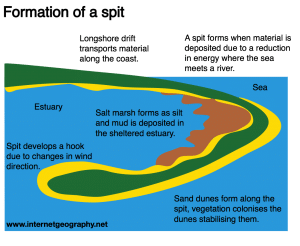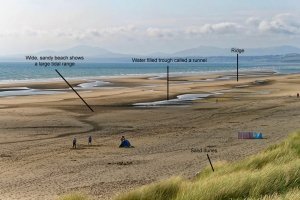Landforms of Coastal Deposition Flashcards
Identify 3 landforms of coastal deposition.
Click to View the Answer
Click to View the Question
Beaches, sand dunes, spits and bars.
Find out more about landforms of coastal deposition.
Identify 3 landforms of coastal deposition.
What is a beach?
Click to View the Answer
Click to View the Question
The beach is the area between the lowest spring tide level and the point reached by the storm waves in the highest tides.
Find out more about landforms of coastal deposition.
What is a beach?
Produce an annotated diagram to show the main features of a spit.
Click to View the Answer
Click to View the Question
Find out more about landforms of coastal deposition.
Produce an annotated diagram to show the main features of a spit.
What are ridges and runnels?
Click to View the Answer
Click to View the Question
Ridges are areas of the beach that are raised. The dips are water-filled troughs called runnels.
Find out more about landforms of coastal deposition.
What are ridges and runnels?
Where do sandy beaches typically form?
Click to View the Answer
Click to View the Question
A sandy beach is usually formed in a sheltered bays, where low energy, constructive waves transport material onto the shore.
Find out more about landforms of coastal deposition.
Where do sandy beaches typically form?


